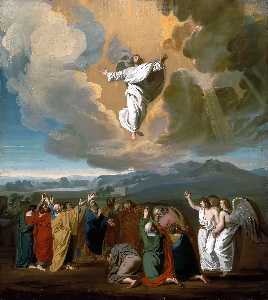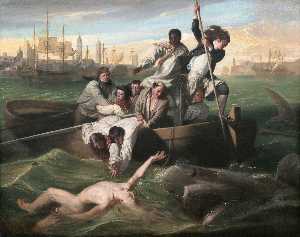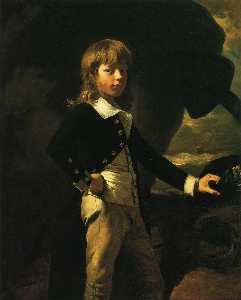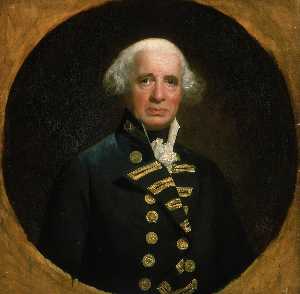Artist: John Singleton Copley
Date: 1778
Size: 182 x 230 cm
Museum: National Gallery of Art (Washington, United States)
Technique: Oil On Canvas
Copley and Brook Watson became friends after the American artist arrived in London in 1774. Watson commissioned him to create a painting of the 1749 event, and Copley produced three versions. It was the first of a series of large-scale historical paintings that Copley would concentrate on after settling in London. The painting is romanticised: the gory detail of the injury is hidden beneath the waves, though there is a hint of blood in the water. The figure of Watson is based on the statue of the "Borghese Gladiator", by Agasias of Ephesus, in the Louvre. Other apparent influences are Renaissance art, and the ancient statue of Laocoön and his Sons, which Copley may have seen in Rome. Copley was probably also influenced by Benjamin West's The Death of General Wolfe, and the growing popularity of romantic painting. The composition of the rescuers in the boat shows hints of Peter Paul Rubens's Jonah Thrown into the Sea, and both Rubens's Miraculous Draught of Fishes and Raphael's painting of the same name. The facial expressions show a marked resemblance to those in Charles Le Brun's Conférence de M. Le Brun sur l'expression générale et particulière, an influential work published in 1698; they portray a range of emotions, from fear to courage. Various elements of composition were changed as the painting progressed. Infrared analysis shows that the old boatswain was originally a young man, and preliminary sketches reveal that the black sailor at the rear of the boat, who also appears as the subject of Copley's Head of a Negro painted around the same time, was originally envisioned as a white man with long, flowing hair.
Artist |
|
|---|---|
Download |
|
Permissions |
Free for non commercial use. See below. |
John Singleton Copley – Most viewed artworks
|
This image (or other media file) is in the public domain because its copyright has expired. However - you may not use this image for commercial purposes and you may not alter the image or remove the watermark. This applies to the United States, Canada, the European Union and those countries with a copyright term of life of the author plus 70 years.
|















 Note that a few countries have copyright terms longer than 70 years: Mexico has 100 years, Colombia has 80 years, and Guatemala and Samoa have 75 years. This image may
not be in the public domain in these countries, which moreover do not implement the
Note that a few countries have copyright terms longer than 70 years: Mexico has 100 years, Colombia has 80 years, and Guatemala and Samoa have 75 years. This image may
not be in the public domain in these countries, which moreover do not implement the